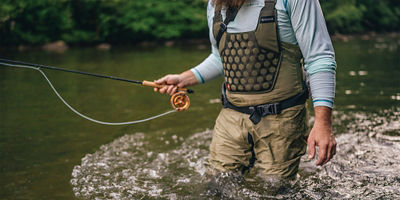
In a lot of remote lakes, fish are more willing to take a fly than you might realize and it’s pretty simple to get a full off-the-grid meal out of your catch. Not only will a fresh fish taste a whole lot better than dehydrated meals (especially after camping for a couple of days), but it can also save you a little weight and space in your pack by carrying only a few small ingredients to complement your hard-earned calories.
First, make sure you check the regulations for the water you’re fishing to confirm you’re allowed to keep your fish. After that, eating any backcountry catch will require you to clean the fish. Once scaled and cleaned, don’t get lost in all of the various cooking and recipe options; choose from one of these three favored methods and get to eating.
Tin Foil
Packing in just a little aluminum foil and some ingredients might be the easiest and most popular way to cook a backcountry fish. Cleanup is minimal, you easily cook the fish all the way through, and it’s incredibly simple to make a great tasting meal. In addition to the foil, bring some olive oil, salt, and lemon pepper.
You can either leave the head on (you’ll get to eat the flavor-intense cheeks) or remove it before cooking this way, but be sure to remove the gills. Leaving the cleaned fish intact, season the inside and outside with oil, salt, and lemon pepper (be generous inside the fish’s cavity). If you’re willing to pack in a little more, consider stuffing the cavity with real lemon slices, onions, or dried herbs.
Once you’re finished seasoning the fish, wrap it up tight in the foil. Place it over the coals of a campfire (wait for them to cool down slightly, and don’t place it in the flame) or in a pan over your camp stove, letting it cook for 5 to 10 minutes depending on the sizes of your fire and your fish. When the meat is opaque and flakey, dig in!





















